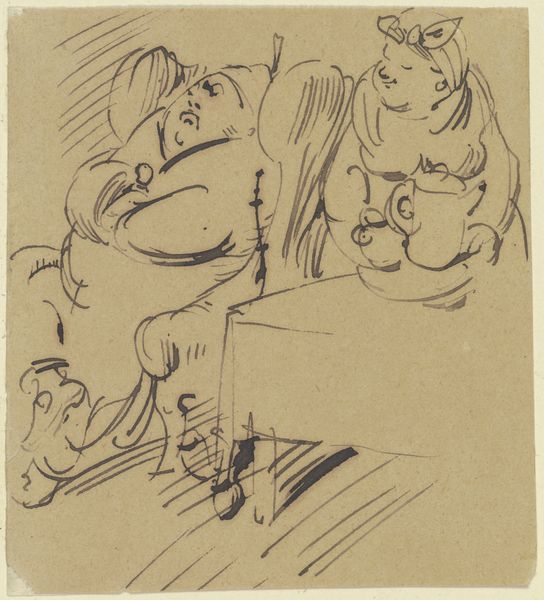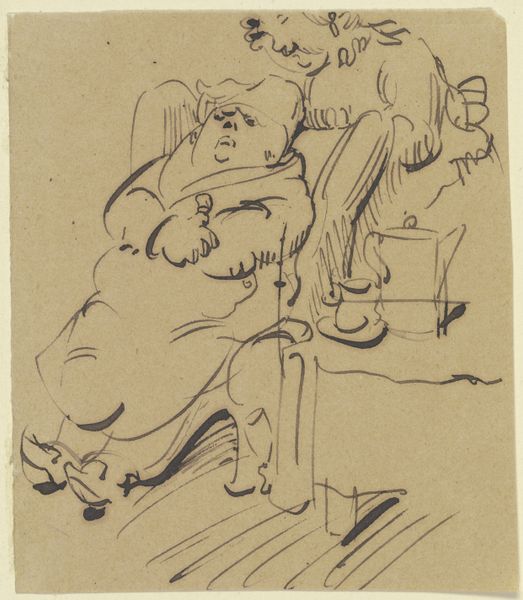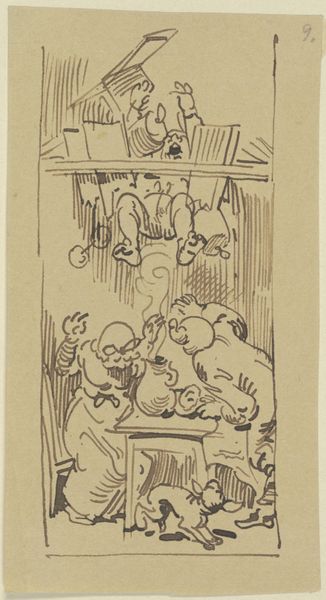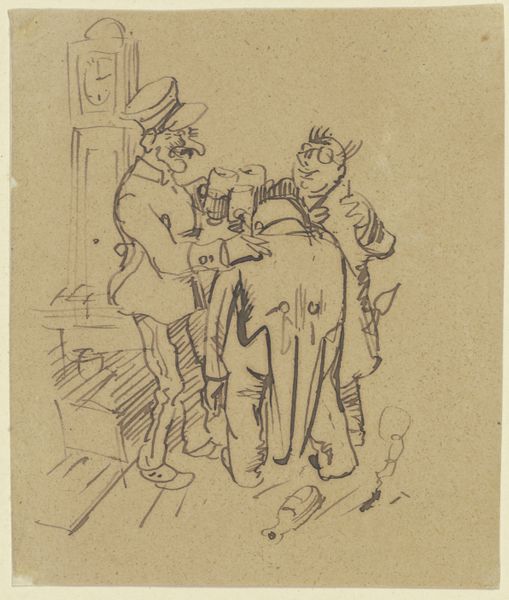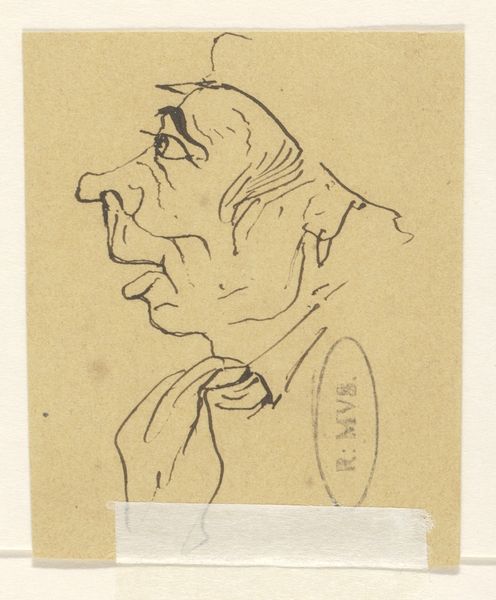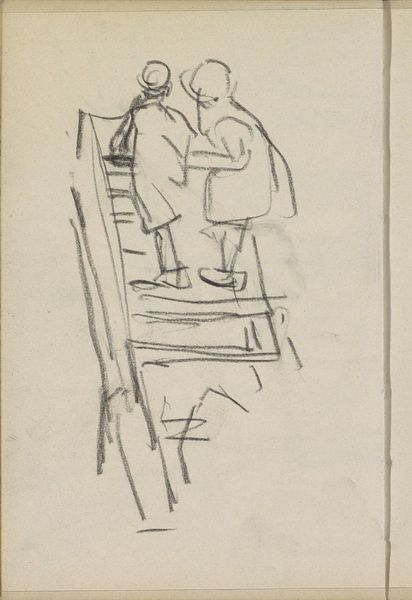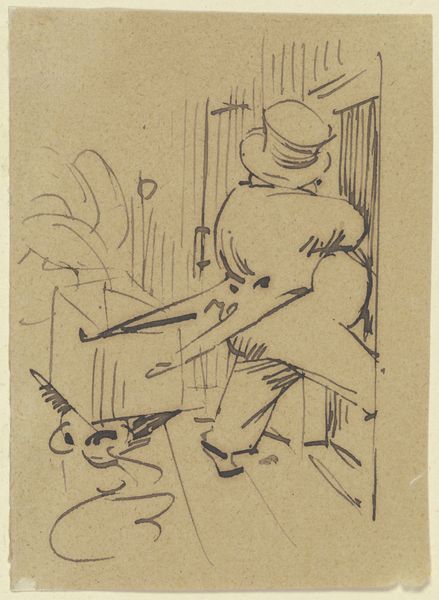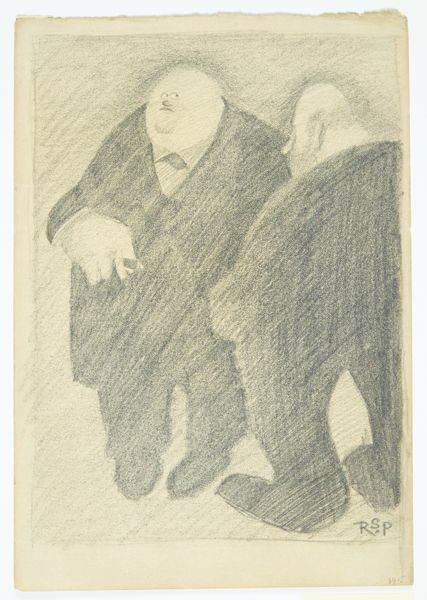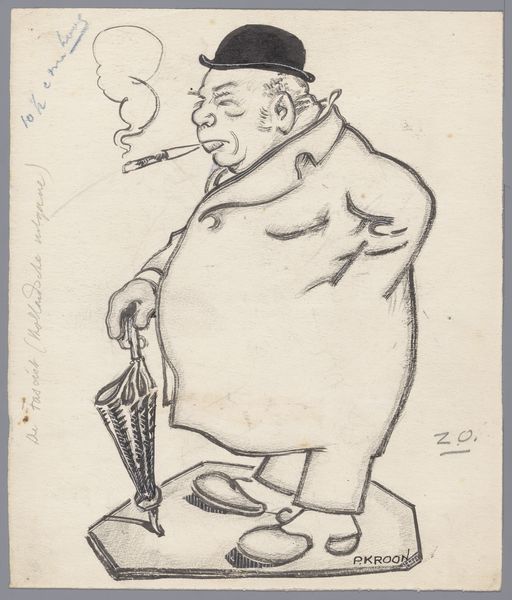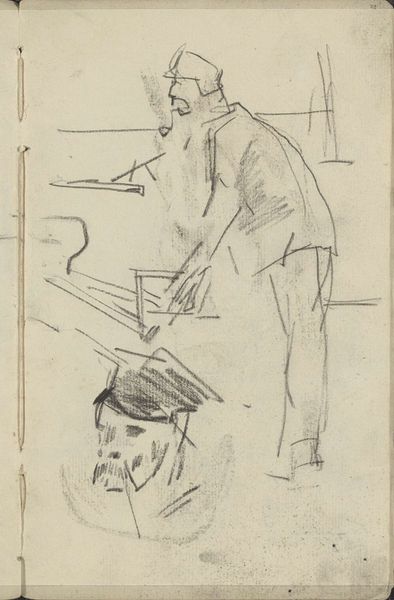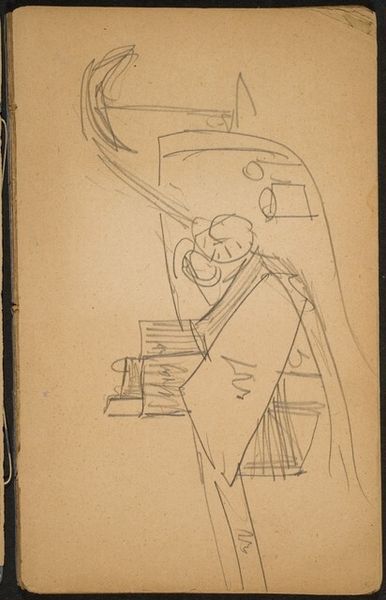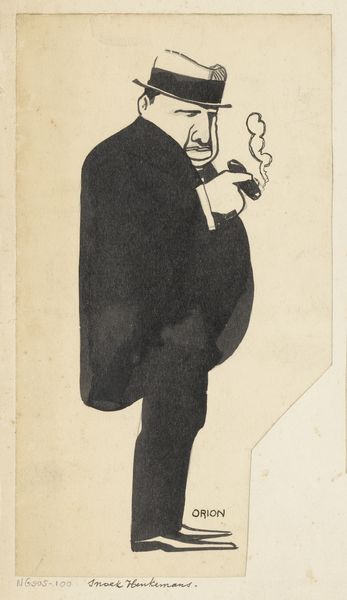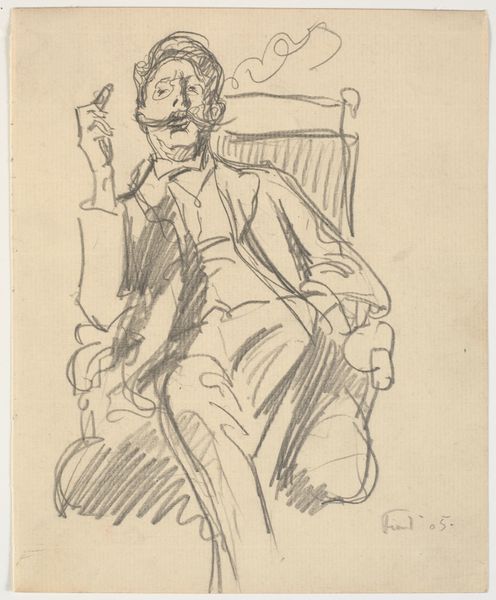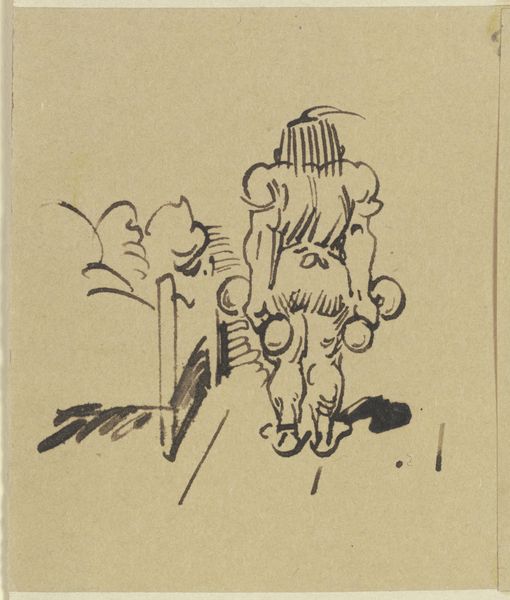
Copyright: Public Domain
Curator: Let’s discuss “Trübner und Frau im Kunstverein,” a pencil and ink drawing on cardboard, likely created around 1906 or 1907. Editor: Well, my immediate response is that there’s something almost satirical about this sketch. The figures, rendered with such broad, confident strokes, have an air of… pomposity, shall we say? The sketch also gives the impression that someone has no patience in that they rendered quick lines instead of a very polished one. Curator: I agree about its immediacy! Trübner was very involved in the artistic life of his time, serving on selection committees and such. Given that this piece represents him and, ostensibly, his wife in an art association, do you find evidence of Institutional critique through its very materiality in that they have drawn quick and spontaneous lines? Editor: Certainly, the deliberate simplicity throws a punch at the rather conservative institutions he frequented! Observe how the architectural details of the gallery are suggested with such sparse strokes that it appears generic. One has to think that its almost like an insult? He seems to capture not the physical specifics, but the overall aesthetic and attitude prevalent in places that he is so well acquianted with and mocks it. It really shows his point of view, right? Curator: It seems to be playing at caricature, certainly! Look at how he uses line to establish the bulk and weight of the main figure versus the secondary figure hidden behind him, or how he draws with very very basic geometry the pictures hung on the wall behind Trubner to represent their nothingness. We’re looking at compositional strategies that certainly prioritize critique above all else. Editor: Absolutely. Even the signature feels nonchalant, almost as if it’s an afterthought. If we see art institutions as these bastions of taste and social rituals, the artwork really encapsulates that strange dynamic. Its as if he does not even belong in the artwork himself, if he renders an afterthought drawing in this social place. Its as if the role he occupies he sees himself with irony and disdain, is this so? Curator: I do think there’s something to that assessment. So what's your biggest takeaway from analyzing "Trübner und Frau im Kunstverein?" Editor: For me, it highlights how even a seemingly casual sketch can pack a potent social commentary, and its done with quick movements and few materials available. The brilliance of economy in this expression lies in its intentional irreverence towards formal artistic pretense, in contrast of places so well-seen. How about you? Curator: For me, it's the effective way Trübner uses fundamental elements like line and space to both depict and dissect his relationship with the institutions of his time. This allows the institution to change in appearance depending on the viewpoint and emotion in which someone uses a formal perspective, which could otherwise look plain or just badly constructed!
Comments
No comments
Be the first to comment and join the conversation on the ultimate creative platform.
